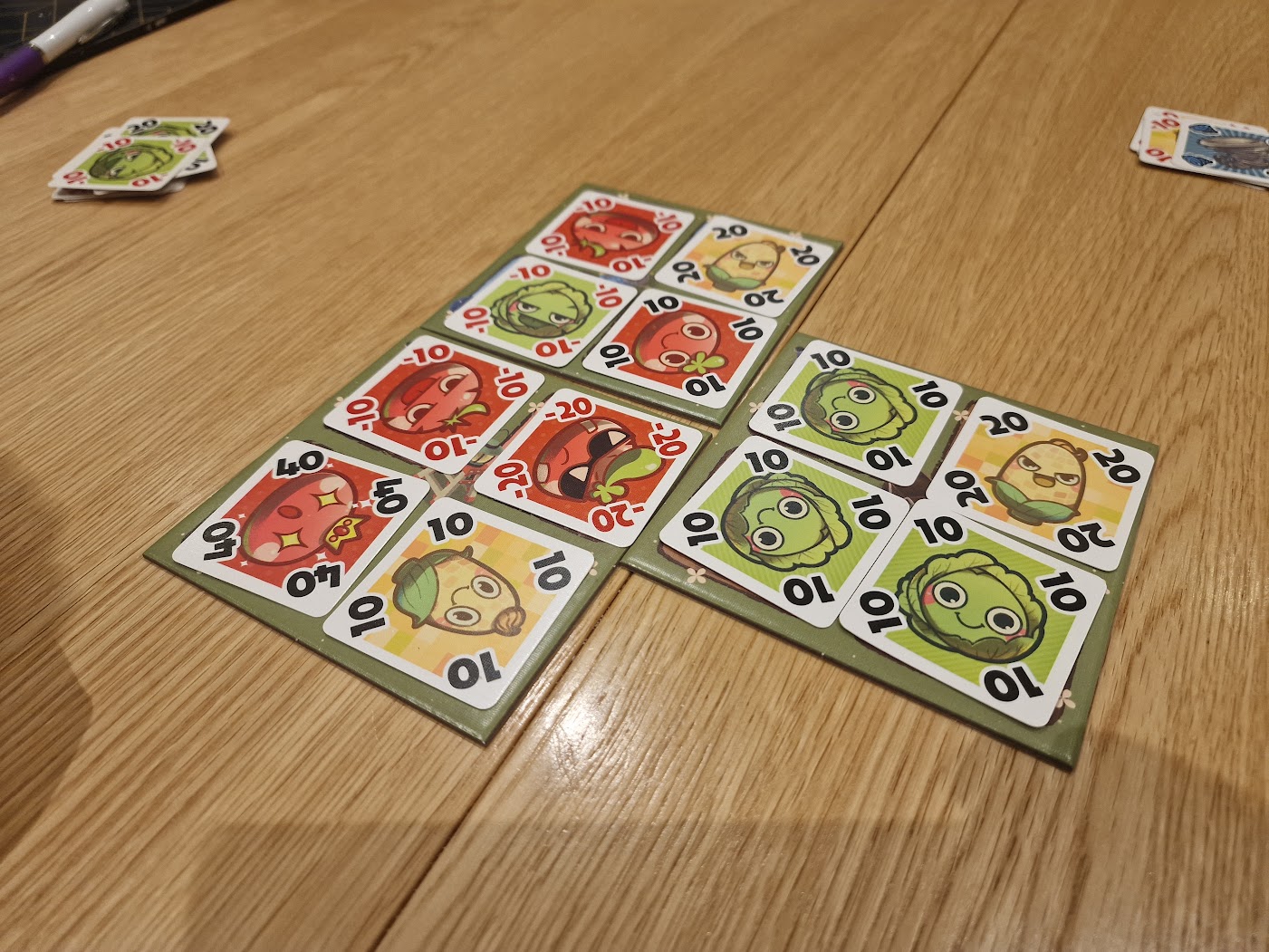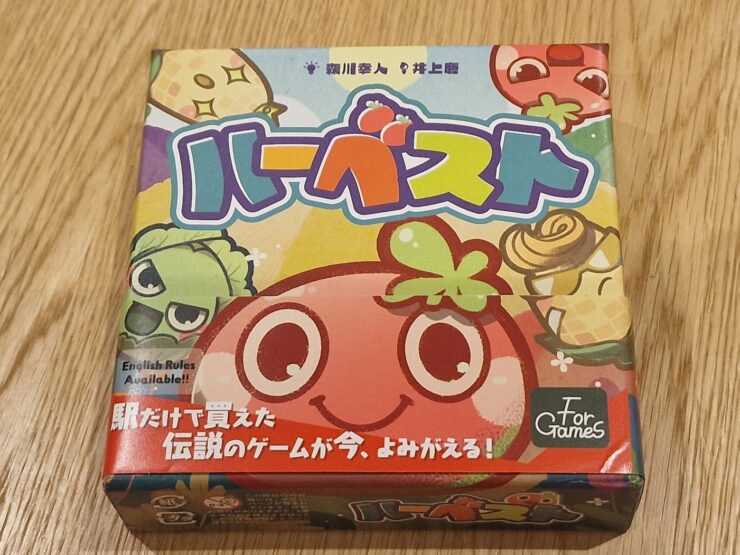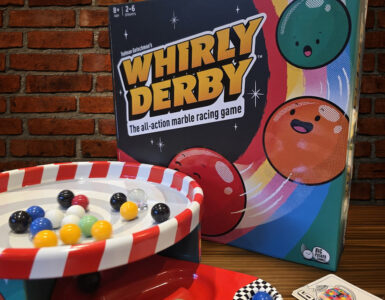As we approach the original goal’s halfway mark and it’s looking quite likely that we will not only beat last year’s record but smash it, we continue the question no one had been asking, which was “What is the best game that I should order from East Asia that is language independent and caused Matt to go down a rabbit hole of Japanese import games?”
Therefore, game 24 of the “Bailey Family Summer 2023 Board Game Bonanza” is “ハーベスト (Harvest)” played by Jack (8.) and myself.
“Harvest” is a fairly old Japanese game from 1992 that I had actually heard about before getting into board games about a decade ago. Therefore, when I did my dangerous browsing on amazon.co.jp, I immediately decided to order a copy.
“Harvest” has a fairly simple premise but is quite different from anything I have played before. Essentially, you are kind of playing a semi-cooperative game of noughts and crosses where you have noughts, crosses, and another thinganother things, and those notes and crosses have points attached to them.
On your first turn, you have to lay a card in the field of your colour if possible, but if there is a card in your field, you can lay it in another player’s field as long as their field has a card in it. To represent how good the crop is, the different vegetables have points associated with them, including negative points. If you lay the third card and make a row of three, including diagonals, you get to take all three of those cards along with the positive and negative points that come along with them. There are also harvest cards, which act as a wildcard, and tornado cards, which also act as a wildcard but allow you to discard the crops harvested with it, which is useful for sometimes clearing groups of negative cards.
Once no player can lay a card, the game is over, and you add up the score, and the highest score wins.
Now, while I have explained the rules to you quickly, it took about a minute for Jack to totally understand what he was doing. What it did take a game or two to realize is that there is an unbelievable level of strategy and social deduction involved in this game, making it way deeper than it first appears.
Firstly, the game openly encourages you to discuss and work together to fill fields. In larger player counts (which I admit I have not played but fully intend to), you are able to discuss ways to work together to gain points and potentially stop another player from running away with the score. Equally, there were a few times when I baited Jack to take a line of three, knowing this would clear a gap in the fields for me to lay a higher-value card. You also need to use up the harvest and tomato cards because if you have one of those left in your hand at the end of the game, they are worth minus 50 points, and considering the totals that we got over the three games we played varied from the 60s to 150s, a range of 50 points is a lot.
Production values of this copy are high. The boards are nice, the cards are cute, and it all fits nicely in a little box, even though I can’t read any other writing on it. It is worth noting that this did not come with English rules, but there are English rules available which I have linked to below, and I printed out, folded up, and now neatly sit in the box.

It is worth noting that this game can be played with up to six players, and this is something I fully intend to do when I return to work in September and get to put this game in front of 13-year-olds.
Small question aside that I will do a separate post on a few weeks into September, but would people potentially be interested in hearing how games go with a larger group of 13-ish year old boys at my school? Obviously, for safeguarding reasons, I would not be able to give any personal details or post any pictures, but I could at least tell you how games play at larger player counts with young teenagers?
As was the same with my Jura Jura Penguin review this is an import so will not be super easy (or cheap to obtain) but again as a bundle with a few things from Amazon.co.jp it might hit the spot. Equally, if you do not want to buy a few things Travel-Games (who specialise in import games) do have this for £24 + p&p.
In conclusion, I love the game. It’s like a game of noughts and crosses, and the downside of it is that once you have played it as many times as most of us probably have, you realize that each game goes the same way, and if you go first and know what you’re doing, it’s pretty easy to win. This game is essentially the raw strategy of noughts and crosses but played out over a much larger game, and Jack and I really enjoyed it. It is rare that we play games multiple times in a single session, but when we sat down to play this, Jack and I ended up playing four matches. The length of the game is a little bit of a double-edged sword. In some ways, it’s great that games are relatively quick, but equally, I would have liked a few more cards to give more chances.
I promise there are a few “bad” games coming up but I end up wanting to write about the good stuff first.














